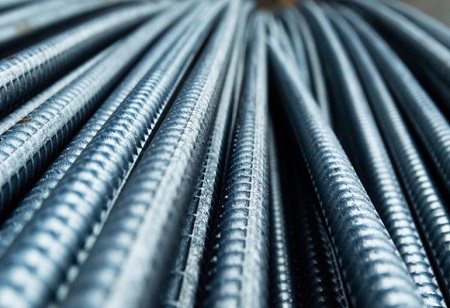Steel industry has appreciated the 6,322 crore rupees
Production Linked Incentive (PLI) scheme approved by the government to boost domestic production of
specialty steel and its export. The Union Cabinet approved the PLI scheme which will attract an investment of about 40,000 crore rupees, create over 5.25 lakh jobs and lead to a capacity addition of 25 million tonnes (MT).
Seshagiri Rao, Joint MD, JSW Steel & Group CFO said, “We welcome the move of government of India in extending PLI scheme to specialty steel sector. This will enable the steel industry to attract fresh investment and state of the art technology that would make our country self-reliant in the production of value added specialty steel products”.
What’s in it for Manufacturers?
Specialty Steel is considered an essential commodity and backbone of the manufacturing industry. The steel sector has been a major contributor in India’s manufacturing output. The expectation of the government through PLI scheme is to boost both integrated steel plants and smaller players as specialty steel production.
It is a known fact that India is a net exporter of steel in terms of quantity but on the other hand it imports bulk amount of specialty steel because of limited production capacity of specialty steel. Specialty steels are manufactured and designed to provide superior performance under specific conditions. The specialty steel is used by automakers or in electrical sector to manufacture transformers and generators.
Current Scenario of Specialty Steel Segment
Specialty Steel sector is on the threshold of a demand revival which could be proved profitable for the sector. Through this move, the government is providing a level playing field to specialty steel sector this time, so that it can compete globally and continue to contribute to the country’s GDP. India stands at second position in steel production and is set for a higher trajectory.
There are companies in the Indian steel industry who are investing heavily in expanding their capacity. This move of the Modi government to include specialty steel under PLI scheme is considered important at present time as in the open and out of control market
scenario, the prices of the domestic steel are dependent on the demand and supply. However, through Product Linked Incentive (PLI), this will not be the case and the availability of the steel will be ensured in the country.
As per Indian Steel Association (ISA), there are chances of growth in specialty steel demand at the rate of 7.2% in year 2021-22. In fact, the per capita consumption of specialty steel has increased from 57.6 Kgs to 74.1 Kgs in the last five years. Furthermore, the government is planning to set up central varsity and infrastructure development in Ladakh.
India is trying to attract the firms that are exploring the countries other than China for steel production. There are several outsider companies who are looking towards India to leverage the Product Linked Incentive scheme and set up their manufacturing base in India.
Challenges Faced by Manufacturers
The surge in imports of specialty steel impacted the sentiment of the Indian steel market, with the decrease in capacity utilization rates of both the primary and secondary specialty steel players. Availability and consistent supplies of raw materials still remain a challenge for manufacturers. Indian Steel Association is constantly facing price volatility of raw materials.
There has been a constant pressure on manufacturers due to fluctuating prices of raw materials and weak steel prices in the market have put significant pressure on the steel margins. Though the Indian steel industry is about 100 years’ old, it lags behind in research, development and innovation.
Indian steel manufacturers have been working hard to become competitive in the market through one or the other way. Confronted with the falling prices of steel and slower consumption due to pandemic, steel manufacturers are facing challenges like job losses, credit downgrades, and cuts in capital expenditure.
Due to slowdown in the key construction and auto sectors, the specialty steel manufacturers are struggling to meet production and sales targets. Many auto manufacturers have announced the production cut down at their respective plants.
Also, as a result of severe impact of the pandemic’s second wave for around 2 months, there was a shortfall in the demand of specialty steel in the domestic market. Due to second wave, the oxygen plants of the steel industry had been diverted from steel making to the production of Liquid Medical Oxygen (LMO) to fulfill the demand of oxygen all over the country as there was a shortage.
The Future Ahead
The Indian government has laid emphasis on “Aatmanirbhar Bharat”, thus emphasizing to produce specialty steel within the country rather than importing from other countries. The Union Cabinet has specifically chosen specialty steel for PLI scheme because in the FY2020-21, total 102 million tonnes (MT) steel was produced in India out of which only 18 million tonnes was specialty steel.
Also, out of 6.7 million tonnes steel imported in FY2020-21, 4 million tonnes consists of specialty steel. After this scheme, it is expected that India will be able to fulfil its requirements of specialty steel which would otherwise have been imported.
